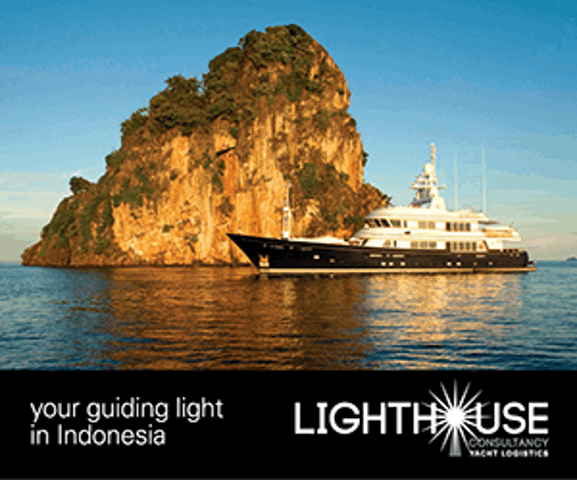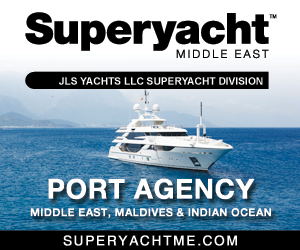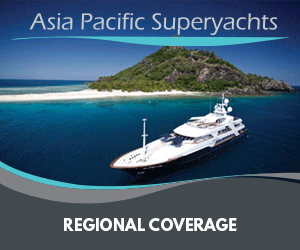- FEATURED / Indian Ocean
- 30 March 2021
Advertisement
THE GLOBAL RATE OF PIRACY and attempted piracy declined by nearly 32 percent between the years 2013 and 2017, according to data from International Maritime Bureau Piracy Reporting Centre (IMB PRC).
One of the reasons for the decline has been the implementation of a global Voluntary Reporting Centre. The increase in information collected about suspicious activities and attempted and successful piracy attacks has led to better understanding and control of the situation (particularly in the Gulf of Aden), arguably leading to a decline in piracy.
However, the risk is still very present, as the first six months of 2018 saw piracy activity greater than the equivalent periods for 2016 and 2017.
Africa still poses the greatest threat; however, the centre of activity has moved from the east coast to the Gulf of Guinea and the Nigerian coast. South-East Asia and Indonesia feature highly on the reports of attacks and attempted attacks.
In the years from 2013 to 2017, only one yacht has reported an attack, in 2015. No yachts have reported an attempted or successful attack in the first six months of 2018. Full reports free of charge can be requested from the IMB PRC on this website: icc-ccs.org/piracy-reporting-centre/ request-piracy-report.
These notes are published in co-operation with the MSCHOA (Maritime Security Centre – Horn of Africa) set up by EU NAVFOR. Notes are for guidance only, and a final decision on whether to enter the Gulf of Aden or any waters where pirates operate, or how to conduct a vessel in those waters, remains entirely the responsibility of the master of each vessel. Superyacht captains should consult the following websites for the latest information on piracy in the region:
- Maritime Security Centre, Horn of Africa (MSCHOA) mschoa.eu
- ICC Commercial Crime Services (CCS) icc-ccs.org
- United Kingdom Maritime Trade Operations (UKMTO) ukmto.org.
The danger of piracy and consequent loss of life and property in the Gulf of Aden, Yemeni, Omani and Somali waters (up to 1,000 miles offshore) is high.
The UKTMO has an additional area outside of the High-Risk Area (HRA) on which they conduct Voluntary Reporting; it is known as the Voluntary Reporting Area (VRA). The VRA extends to 10oS and 78oE, including the Persian Gulf and Red Sea.
The MSCHOA liaises with anti-piracy patrols being conducted by warships from several nations in the area, and with UKMTO principally for the protection of merchant vessels. The patrols operate mainly in the Gulf of Aden and the Somali Basin, but may operate anywhere within the area and will provide surveillance and support as far as possible to yachts; however, no guarantee whatsoever can be offered as to the safe transit of any yacht through these waters.
A yacht that, despite the risks described, decides to make a passage, should advise her plans with as much notice as possible to the UKMTO and MSCHOA, and provide the information set out in the Yacht Passage Advice Form, preferably by email but alternatively by telephone:
UKMTO
- E: watchkeepers@ukmto.org
- T: +44 (0) 2392 222 060 (24 hours)
- or +971 50 552 3215 (24 hours)
MSCHOA
- E: postmaster@mschoa.org
- T: +44 (0)1923 958545
- Fax: +44 (0) 1923 958520 (24 hours)
In an emergency, any of the above numbers (or a warship on VHF16 or VHF8 when in range) will respond on a 24-hour basis.
Yachts are urged to register at least two weeks before entering a high-risk area indicated in the Admiralty Security Chart Q6099. Yachts coming south through the Red Sea should report well before reaching Bab al Mandeb, and should register before reaching Safaga/Jeddah. When a yacht registers its movements, MSCHOA will email piracy alerts to the vessel until she is clear of the area (+72 hours). MSCHOA will pass details of yachts to patrolling warships.
During her passage, a yacht should monitor VHF16 and VHF8, and report by the means and at the intervals advised by the MSCHOA, or by a patrolling warship. Merchant ships transiting the Gulf of Aden (GoA) are being advised to use an Internationally Recognised Transit Corridor (IRTC) in order for warship patrols to be effective. MSCHOA advises yachts to remain close to or within the IRTC as follows.
The IRTC has two lanes, each five nautical miles wide and a separation zone between them two nautical miles wide. It effectively operates as a Traffic Separation Scheme (TSS) although formally it does not have that status. The coordinates of the IRTC lanes are:
- Westbound lane, northern boundary: N 12º E 45º N 14º 30′ E 53º; southern boundary: N 11º 55′ E 45º N 14º 25′ E 53º.
- Eastbound lane, northern boundary: N 11º 53′ E 45º N 14º 23′ E 53º; southern boundary: N 11º 48′ E 45º N 14º 18′ E 53º. The course eastbound is 072°T and westbound 252°T.
A yacht that has registered her intention to transit the GoA is invited to sail EITHER in the two-mile-wide buffer zone between the two lanes OR close to the outer limit of the appropriate lane. These options give the best chance of a yacht’s transmission on VHF16 or VHF8 being received by a patrolling warship, or being relayed by a merchant vessel. However, VHF contact is not guaranteed.
A yacht coming from, for example, Aden eastbound or Salalah westbound may join the IRTC some way from its start point. The area of the IRTC between E 47º and E 49º is considered the most dangerous and a yacht should ensure she has joined well before the ‘high-risk area to enjoy the maximum possible protection. The yacht should plan to conduct as much of this part of the passage as possible at night. In the interests of navigational safety, on joining the IRTC midway along its length, a yacht should act as if joining a Traffic Separation Scheme.
It has long been common practice for yachts intending to transit the GoA to form small informal convoys in either Djibouti, Aden or Salalah. It is emphasised that this is a decision for individual captains, but the military forces support this concept.
If the convoy approach is to be followed it is suggested that there is a limit of no more than five vessels in any one convoy.
This is because vessels will need to keep close to one another if they are to offer any protection through numbers, and close station-keeping for the duration of the voyage through the GoA may prove a strain, particularly if short-handed.
Carriage of arms is not advised. There is a serious risk of escalation in the levels of violence.
AIS, communications, radar and EPIRBs
Current advice to ships (which are required to carry AIS class A) is to have it transmitting limited information while transiting the GoA, restricted to ship’s identity, position, course, speed, navigational status and safety-related information. Most AIS class B transponders (commonly carried by yachts) can only transmit limited information and are not configurable by the user. Current naval advice to yachts is to leave it switched on in the GoA so that the warships know where they are.
In the Somali Basin or further afield where there are far fewer warships operating, an AIS transponder should be switched off unless the yacht is either aware of military forces in their vicinity, or is under attack. Where possible, MSCHOA should be contacted for up-to-date advice on its use.
A 406 EPIRB or PLB will quickly draw attention to you but remember that these are emergency devices intended specifically for saving life. A SART will show a signal on any nearby marine radar, which may include that of pirates. It is legitimate to call ‘mayday’ if under attack (VHF or HF DSC, VHF16 or VHF8, Sat-C or any other means). For an early warning call, the discreet use of a satellite phone to one of the numbers listed earlier may be the best option.
When in transit, a radar transceiver should be used in the normal way. A radar target enhancer (RTE) provides an apparently large echo and should be switched off unless there is danger of collision. The possibility of an HF communications facility for yachts in the region is under discussion.
Preparations
Ensure that all systems (in particular the engines) are in good shape, radios and sat phones are working properly, that you have plenty of fuel and the ship’s batteries are in excellent order. Be prepared to motor or motor-sail at your maximum speed for the entire transit of the IRTC. Carry additional supplies (particularly water purification, medical supplies and vitamin supplements) for the eventuality that you are unfortunate enough to be pirated.
Pirates operate from very small craft, which limits their operation to moderate weather conditions. While no statistics exist, it is likely to be difficult to operate these small craft in sea states 3 and above, although operation in higher sea states cannot be ruled out. Pirates are less likely to launch attacks in the dark; merchant ships try to pass through the area between E 47º and E 49º in the IRTC during the hours of darkness for this reason. Even during the day, the pirate’s visual horizon is less than five miles; he will see a merchantman long before he sees a yacht.
In a typical pirate attack, small, high-speed (up to 25-knot) open boats deploy from a mother ship, often a pirated fishing vessel or dhow.
Commonly, two or more of these high-speed boats are used in attacks, often approaching from either quarter of the intended target. Be aware that perfectly legitimate tuna fishermen often employ similar tactics when chasing fish. It can be very hard to differentiate between a genuine fisherman and a prospective pirate. In general, the crew of a fishing boat will have all eyes trained on the elusive target; in a pirate boat, the gunmen may remain hidden.
Despite the odds being uneven, it is worth making a risk assessment in advance of a transit and making sure everyone has thought through and agreed on how they will respond. Guidance on what to do in the event of an attack is available below.
Mental preparation is essential. Continuous vigilance is required and an early call to the authorities is recommended if in doubt, as the arrival of military units (by sea or air) or a VHF call to a warship (even if you cannot see a warship) may cause an impending attack to be called off.
If you can delay the pirates from boarding by even 15 minutes, it may give the warships time to react.
The time between first sighting a pirate and the commencement of an attack could be as little as five minutes.
When making a routine call on VHF, do not give your position in latitude and longitude unless you are absolutely certain that the warship is close enough to be able to assist you, or you are making a mayday call. The risk is that in reporting what turns out to be a false alarm, you could alert other skiffs of your position and excite their interest in you.
Under attack
A vessel is recommended to make a mayday call and report immediately to UKMTO. If possible, the call to UKMTO should be followed by a call to MSCHOA.
Pirates on board?
- Try to remain calm.
- Stay together as far as it is practicable to do so.
- Offer no resistance.
- Cooperate with the pirates.
- Do NOT use firearms, even if available – the risk of escalation is significant.
- Do NOT use flash photography, which may be mistaken for muzzle flashes by the pirates or by any military force sent to assist.
- Do NOT use flares or other pyrotechnics as weapons against pirates.
- In the event that military personnel take action on board the vessel, unless otherwise directed, all crew members should keep low to the deck, cover their head with both hands (always ensuring that both hands are empty and visible). Be prepared to answer questions on identity and status as military personnel will need to differentiate quickly between crew and pirates. Follow-up reports should be sent to UKMTO who will advise on information needed.










